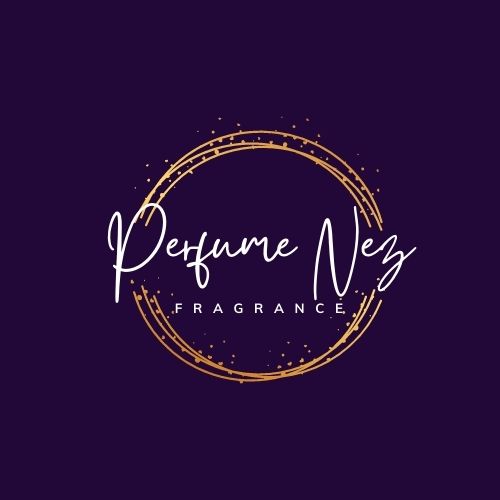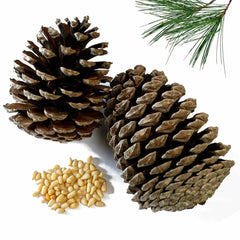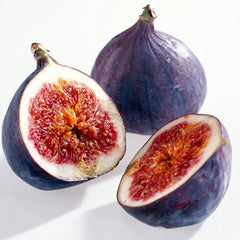What Does Lavender Smell Like?
As An Amazon Associate We Earn From Qualifying Purchases At No Extra Cost To You

Embark on a fragrant journey to the serene landscapes of lavender fields and discover the captivating aroma of lavender. Lavender, a versatile and beloved herb, boasts a distinctive fragrance that captures the essence of blooming meadows and relaxation. Join us as we explore the question: What does lavender smell like?
What Does Lavender Smell Like?
The fragrance of lavender is a harmonious blend of floral elegance with herbal undertones, creating a timeless and soothing olfactory experience. Imagine standing in the midst of a lavender field, surrounded by the gentle breeze carrying the sweet, herbaceous aroma. Lavender's scent is a celebration of nature's beauty, offering a calming and enchanting journey for the senses.
Enter the world of lavender, where the fragrance is a symphony of floral notes dancing in the air. As you approach lavender, the first olfactory impression is a delicate bouquet of blossoms, reminiscent of a serene garden in full bloom. Lavender's fragrance is a celebration of floral elegance, instantly transporting you to a peaceful sanctuary with its calming and enchanting character.
The scent of lavender is a herbal symphony that embodies the serenity of a lavender meadow. Picture the earthy and green undertones seamlessly intertwined with the floral notes, creating a fragrant tapestry that evokes the essence of nature's tranquility. The aroma is a testament to the herbal serenity of lavender, enveloping you in a calming and grounding olfactory experience.
While predominantly floral and herbal, there's a subtle undercurrent of sweetness in lavender's scent. This delicate floral nectar adds depth to the fragrance, creating a well-balanced composition that is both soothing and subtly sweet. Lavender's aroma is a delightful interplay of floral elegance and gentle sweetness, reminiscent of blooming lavender fields in perfect harmony.
Delve deeper into the scent, and you may notice a crisp freshness that characterizes lavender's fragrance. It's as if the aroma carries the essence of a gentle lavender breeze, creating a refreshing and invigorating olfactory experience. Lavender's scent is like a breath of fresh air, bringing a sense of clarity and calmness to the forefront.
Hence, lavender's fragrance is a tranquil aura of floral symphony, herbal serenity, subtle sweetness, and crisp freshness. It stands as a testament to the calming and enchanting qualities of this beloved herb, offering a sensory experience that is both soothing and delightful. Lavender, with its timeless and serene aroma, invites us to bask in the beauty of nature's fragrant embrace, a journey that unfolds with every peaceful inhale.
Factors Influencing the Scent of Lavender Essential Oil
Lavender essential oil is a carefully extracted essence designed to capture the complex and soothing aroma of Lavandula angustifolia, commonly known as lavender. The formulation of lavender essential oil involves several factors that contribute to its distinctive and calming scent. Here are several key elements influencing the fragrance profile of lavender essential oil:
-
Lavender Species: Different species of lavender can yield oils with varying aromatic profiles. Lavandula angustifolia, often referred to as true lavender, is widely preferred for its sweet and floral fragrance.
-
Growing Conditions: The geographical location and climate in which lavender is cultivated can impact the oil's scent. Lavender thrives in sunny and well-drained soil, and oils from plants grown in ideal conditions tend to have a superior fragrance.
-
Altitude: Lavender cultivated at higher altitudes may produce oils with a slightly different aroma due to the variations in environmental factors.
-
Harvesting Time: The stage at which lavender is harvested influences the oil's fragrance. Harvesting at the peak of blooming ensures a higher concentration of aromatic compounds.
-
Extraction Method: Lavender essential oil is commonly extracted through steam distillation. The method used in the extraction process plays a crucial role in preserving the delicate aromatic compounds.
-
Chemical Composition: The unique combination of constituents in lavender, such as linalool and linalyl acetate, contributes to its characteristic scent. The ratio of these compounds can vary among lavender oils.
-
Storage Conditions: Proper storage of lavender essential oil is essential to maintain its freshness. Dark glass bottles, kept in a cool and dark environment, help protect the oil from light and temperature fluctuations.
-
Quality of Raw Materials: The quality of lavender plants used in oil production directly influences the final scent. High-quality lavender plants cultivated without pesticides or synthetic fertilizers contribute to a superior essential oil.
-
Distillation Equipment: The equipment used in the distillation process should be of high quality to ensure the retention of the oil's aromatic nuances.
-
Batch Variations: Natural variations can occur between batches of lavender essential oil due to factors like soil composition and weather conditions during cultivation.
-
Adulteration: Pure lavender essential oil may be adulterated with synthetic compounds or other essential oils. Choosing oils from reputable suppliers helps ensure authenticity.
-
Organic vs. Conventional: Organic lavender essential oil is derived from plants grown without synthetic chemicals. Some individuals prefer the purity of organic oils, although conventional oils can also meet high standards.
-
Blending Practices: Lavender essential oil is often used in blends with other oils to create unique fragrances. The choice of complementary oils can influence the overall aroma.
-
Therapeutic vs. Fragrance Grade: Lavender essential oil comes in different grades, with therapeutic-grade oils often meeting higher purity and quality standards. Fragrance-grade oils may be formulated for scent rather than therapeutic benefits.
-
Testing and Analysis: Reputable producers conduct testing and analysis to ensure the quality and purity of lavender essential oil. Third-party testing provides an additional layer of verification.
-
Certifications: Look for lavender essential oils with certifications from organizations that verify quality standards, such as USDA Organic or the International Organization for Standardization (ISO).
-
Consumer Reviews: Feedback from other users can offer insights into the quality and effectiveness of a particular lavender essential oil.
-
Price: While not always an indicator of quality, excessively low prices may raise concerns about the authenticity or purity of the lavender essential oil.
-
Sustainability Practices: Some consumers prioritize oils sourced from producers committed to sustainable and environmentally friendly practices.
-
Distillation Time: The duration of the distillation process can impact the oil's fragrance. Properly timed distillation helps capture the full range of aromatic compounds without overheating.
Understanding these factors can empower consumers to make informed choices when selecting lavender essential oil, ensuring a delightful and authentic olfactory experience.
What to Look for When Choosing Lavender Essential Oil
Selecting a lavender essential oil allows you to enjoy the calming and soothing aroma of lavender in various applications, from aromatherapy to skincare. Consider these factors to ensure you choose a high-quality and authentic lavender essential oil:
-
Botanical Name: Verify that the essential oil is derived from Lavandula angustifolia, commonly known as true lavender, for its preferred fragrance profile.
-
Purity: Choose a lavender essential oil labeled as 100% pure and free from additives, diluents, or synthetic fragrances.
-
Organic Certification: Organic lavender essential oil is sourced from plants grown without synthetic pesticides or fertilizers. Look for oils with recognized organic certifications.
-
Steam Distillation: Confirm that the oil is obtained through steam distillation, a gentle extraction method that preserves the delicate aromatic compounds.
-
Dark Glass Bottle: Lavender essential oil should be packaged in a dark glass bottle to protect it from light exposure, which can degrade the oil.
-
Scent Description: Product descriptions or labels should provide information about the scent profile, highlighting the floral, herbal, and sweet notes of lavender.
-
Batch Information: Some reputable suppliers include batch information on the label, allowing you to trace the oil back to its specific production batch.
-
Reputable Brand: Choose lavender essential oils from well-established and reputable brands or suppliers with a track record of quality.
-
Third-Party Testing: Look for essential oils that undergo third-party testing for purity and quality. This information may be available on the product label or the brand's website.
-
Transparent Labeling: The label should clearly indicate the country of origin, botanical name, extraction method, and any relevant certifications.
-
Sustainable Sourcing: Brands committed to sustainable and ethical sourcing practices contribute to environmentally conscious choices.
-
Consumer Reviews: Read reviews from other users to gauge their experiences with a specific lavender essential oil brand or product.
-
Educational Resources: Brands that provide educational resources about lavender essential oil and its benefits demonstrate a commitment to transparency and consumer awareness.
-
Price: While not the sole determinant of quality, a fair and reasonable price is generally reflective of the cost of producing high-quality lavender essential oil.
-
Return Policy: Check the supplier's return policy to ensure you have options in case the essential oil does not meet your expectations.
By considering these factors, you can confidently choose a lavender essential oil that aligns with your preferences and quality standards. Whether you use it for aromatherapy, massage, or DIY skincare, a high-quality lavender essential oil can enhance your well-being with its calming and delightful fragrance.
Where to Find Reputable Lavender Essential Oils
Discovering high-quality lavender essential oils involves exploring reputable sources that prioritize authenticity and purity. Here are some places where you can find reliable lavender essential oils:
-
Specialty Aromatherapy Stores: Shops specializing in aromatherapy and essential oils often carry a selection of high-quality lavender essential oils. These stores may provide knowledgeable staff to guide your selection.
-
Certified Organic Stores: Organic stores or co-ops that focus on certified organic products may offer lavender essential oils with organic certifications, ensuring a commitment to natural and sustainable practices.
-
Well-Known Essential Oil Brands: Established brands known for their commitment to quality, transparency, and rigorous testing are reliable sources for lavender essential oils. Examples include doTERRA, Young Living, and Plant Therapy.
-
Natural Health Stores: Stores dedicated to natural health and wellness may carry a variety of essential oils, including lavender. Check for reputable brands with a focus on purity.
-
Online Retailers: Reputable online platforms, such as Amazon, may offer a wide selection of lavender essential oils. Look for products with detailed descriptions, customer reviews, and transparent information about sourcing.
-
Holistic and Wellness Centers: Centers focusing on holistic health and wellness may carry lavender essential oils as part of their product offerings. Inquire about the sourcing and quality standards of the oils they carry.
-
Farmers' Markets: Some farmers' markets feature vendors specializing in natural products, including essential oils. Local producers may offer lavender essential oils with a personal touch.
-
Specialty Beauty and Skincare Stores: Beauty and skincare stores that emphasize natural and organic products may carry lavender essential oils for use in skincare formulations.
-
Herbal Shops: Stores specializing in herbs and natural remedies may have lavender essential oils known for their therapeutic properties. Inquire about the extraction methods used.
-
Wellness Retreats: Events or retreats focused on wellness and natural living often feature vendors offering essential oils. These settings may provide an opportunity to sample and purchase high-quality lavender essential oils.
-
Holistic Practitioners: Holistic practitioners or aromatherapists may recommend specific brands or sources for lavender essential oils based on their knowledge and experiences.
-
Spas and Wellness Centers: Spas and wellness centers that prioritize natural and aromatherapeutic practices may use and sell lavender essential oils. Inquire about the brands they trust.
-
Local Apothecaries: Apothecaries or herbal remedy shops may carry lavender essential oils sourced from reputable suppliers. Check for information about the oil's origin and quality.
-
Cooperative Markets: Cooperative markets or community-supported agriculture (CSA) programs may feature local producers offering lavender essential oils with a focus on sustainability.
-
Natural Living Expos: Events and expos centered around natural living and wellness often have exhibitors showcasing essential oils, including lavender. Attendees can explore different brands and options.
When purchasing lavender essential oil, it's essential to verify the credibility of the source, ensuring that the oil meets your quality standards. Reading product descriptions, checking for certifications, and considering customer reviews can guide you toward reputable lavender essential oil options.
20 Questions and Answers about Lavender:
-
What is lavender? Lavender is a fragrant herb known for its distinctive aroma and purple flowers. It belongs to the mint family and is widely used in perfumery.
-
Where is lavender commonly grown? Lavender is native to the Mediterranean region, but it is now cultivated in various parts of the world, including Europe, North America, and Australia.
-
Which part of the lavender plant is used in perfumery? The essential oil extracted from the flowers of the lavender plant is primarily used in perfumery.
-
What gives lavender its unique fragrance? Lavender's fragrance is attributed to the presence of compounds such as linalool and linalyl acetate in its essential oil.
-
Is there more than one type of lavender used in perfumery? Yes, there are various species of lavender, with Lavandula angustifolia (English lavender) and Lavandula x intermedia (lavandin) being the most commonly used in perfumery.
-
What are the main notes associated with lavender in perfumery? Lavender is often classified as a middle or heart note in perfumery, contributing a fresh, floral, and herbaceous aroma.
-
Does lavender blend well with other fragrances? Lavender blends well with a variety of scents, including citrus, floral, woody, and herbal notes. It is a versatile ingredient in perfumery.
-
How is lavender essential oil extracted? Lavender essential oil is typically extracted through steam distillation, a process that involves passing steam through the lavender flowers to capture the volatile compounds.
-
What are the therapeutic properties of lavender in addition to its use in perfumery? Lavender is known for its calming and soothing properties, making it a popular choice in aromatherapy and skincare products.
-
Can lavender be used as a standalone fragrance in perfumery? Yes, lavender is often used as a standalone fragrance in perfumery, particularly in classic and traditional scents.
-
Is lavender commonly used in men's or women's fragrances? Lavender is a versatile note used in both men's and women's fragrances, contributing to a wide range of scents.
-
What are some famous perfumes that prominently feature lavender? Some iconic perfumes featuring lavender include "Houbigant Fougère Royale" and "Guerlain Jicky."
-
Is lavender oil sensitive to light and heat? Yes, lavender oil can be sensitive to light and heat, so it is often stored in dark, cool bottles to preserve its quality.
-
Can lavender be grown for personal use in making perfumes? Yes, lavender can be grown at home for personal use in making perfumes. The harvested flowers can be used to create DIY lavender oil.
-
What are the color variations of lavender flowers? Lavender flowers come in various shades of purple, ranging from pale lavender to deep violet.
-
Does the geographic origin of lavender impact its fragrance? Yes, the geographic origin of lavender can influence its fragrance due to variations in soil, climate, and growing conditions.
-
Is lavender used in niche or mainstream perfumery more? Lavender is utilized in both niche and mainstream perfumery, showcasing its broad appeal and versatility.
-
Are there any cultural or historical significances associated with lavender in perfumery? Lavender has a rich cultural history and has been used for centuries for its aromatic and medicinal properties. It is often associated with calmness and purity.
-
Can lavender be found in other fragrance products besides perfumes? Lavender is a common ingredient in various fragrance products, including candles, soaps, lotions, and air fresheners.
-
Are there any sustainability considerations related to lavender production for perfumery? Sustainable practices, such as organic farming and ethical sourcing, are increasingly important in lavender production for perfumery to minimize environmental impact and support ethical trade.
Buy Perfumes - Best Online Retailers
Click For Affordable Inspired Perfume Alternatives
Click For The Best Niche Perfumes & Decants
Pheromone Perfumes - Confidence, Attraction & Appeal - Click For More
Home Fragrances & Candle Warmers - Click To Scent Up Your Spaces Today!



